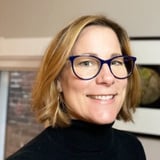Summary
Practicing meaningful inclusion in your research and design work requires learning from a wide range of users, including people with disabilities. Still, applying your existing UX principles and methodologies towards accessibility research can feel daunting for practitioners who rarely get to work with assistive technology users and people with disabilities. Join Kavana Ramesh, a UX Researcher at Fable with hundreds of hours of accessibility research, as she shares a reflective framework for how to build confidence in your team.
Key Insights
-
•
Inclusive design drives innovation benefiting all users, not just those with disabilities.
-
•
Captions and voice assistants are innovations initially created for accessibility but widely adopted by all.
-
•
Practitioners often feel overwhelmed due to lack of exposure to assistive technology users.
-
•
Familiarity with assistive technology, through observation or direct interaction, reduces fear and builds confidence.
-
•
Power dynamics in research sessions can be mitigated by empowering assistive technology users as experts.
-
•
Assistive technologies fall broadly into screen readers, screen magnifiers, and alternative navigation tools.
-
•
Research facilitators should adapt protocols flexibly to accommodate users' needs for equitable, not necessarily equal, experiences.
-
•
Time-based metrics may be less meaningful than tracking blockers or pain points for assistive technology users.
-
•
Assistive technology users often face barriers from standard UX elements requiring workarounds.
-
•
Repeated practice with different assistive technologies is essential for UX practitioners to gain competence and confidence.
Notable Quotes
"Captions and subtitles were initially designed for people who are deaf or hard of hearing but over 50% of Americans watch content with subtitles."
"Trying something new can feel very daunting, especially if you rarely interact with people who use assistive technology."
"You’re really there to learn because the person with assistive technology is the expert of their setup."
"Think of assistive technology in three categories: screen readers, screen magnification, and alternative navigation."
"It’s like showing up to a building and the elevator’s not working, so you have to take the stairs—that’s what happens when my preferred navigation methods don’t work."
"Watching users navigate with assistive technology exposes you to barriers that people with disabilities face online."
"Assistive technology can feel like another person in the room during a research session, which you have to understand and include."
"Adapt your protocol as needed to support different users; equity may mean not treating everyone exactly the same."
"Tracking blockers and pain points is often more useful than just tracking time for tasks in inclusive research."
"Everyone benefits from thinking about accessibility, and inclusion can lead to more confident and better design practices."
Or choose a question:
















More Videos

"Business leaders are super busy, data-driven, competitive, and have a finely tuned bullshit meter."
Doug PowellClosing Keynote: Design at Scale
November 8, 2018

"Giving parents something meaningful to do during sessions helps keep them engaged and supportive."
Mila Kuznetsova Lucy DentonHow Lessons Learned from Our Youngest Users Can Help Us Evolve our Practices
March 9, 2022

"We created a Wizard of Oz smoke and mirrors prototype—a simple text message thread between a parent and this service—just to get enough buy-in."
Sarah GallimoreInspire Progress with Artifacts from the Future
November 18, 2022

"We can’t complain about not having a seat at the table if we don’t offer one of our own."
Lada Gorlenko Sharbani Dhar Sébastien Malo Rob Mitzel Ivana Ng Michal Anne RogondinoTheme 1: Discussion
January 8, 2024

"Our goal is to be AI fluent, not necessarily AI experts."
Alnie FigueroaThe Future of Design Operations: Transforming Our Craft
September 10, 2025

"Research is not as easy as putting on a shoe and just doing it; it requires careful consideration and alignment with imperatives."
Landon BarnesAre My Research Findings Actually Meaningful?
March 10, 2022

"When you encounter an obstacle, how do you respond? Maybe it’s an invitation to grow."
Emily EagleCan't Rewind: Radio and Retail
June 3, 2019

"Managing resistance is mental; customers might resist because they've learned workarounds with legacy systems."
Malini RaoLessons Learned from a 4-year Product Re-platforming Journey
June 9, 2021

"Designers are often seen as bottlenecks because our work is harder to estimate and track than engineering’s."
Asia HoePartnering with Product: A Journey from Junior to Senior Design
November 29, 2023
















